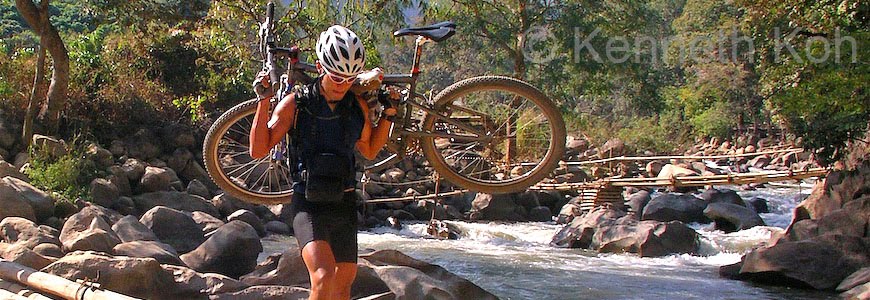 |
| Balloons over Bagan, Myanmar. |
Myanmar, also known as Burma, is a country of contradictions. It's a land of jaw-dropping beauty and a people who have endured decades of oppression and hardship. Until recently, it was isolated from the rest of the world, and its unique culture has survived the 21st century relatively unscathed. Burma is rapidly catching up with the 21st century, and not all of it good. Certain technology, like cellphones, is cheap, and even poor farmers have smartphones and can be seen texting from atop water buffaloes. Plastic bags litter the landscape, as basic needs like trash disposal, health care, and infrastructure (power, roads, etc) are either practically non-existant. Buddhism plays a major role in the country, providing a system of basic education, health care and a moral code for the people.
 |
| A monk grabs a photo with his cellphone at the Temple of 582,000 Buddhas, Thanboday, Myanmar. |
My wife, Laura and I were there for some biking and photography/filming. Laura is recovering from a slipped disc and was not sure how much biking she could do, and so we opted to take a supported tour from a local operator. This turned out to be a good thing, because her back was far from recovered. We flew into Mandalay, and visited Bagan and Inle Lake. We also visited Yangon from an earlier trip, and clips from that trip are also included in our trip video below.
 |
| End of the day, Bagan, Myanmar |
We didn't have much information on biking when we planned our trip, and we didn't know how much biking Laura could do, so we wrote to a couple of companies and asked if they could take us to the places we wanted to see, and to do some biking as well. All the biking was planned on road, usually tarmac, but occasionally some dirt road. The paved roads were extremely busy.
 |
| Fisherman, Inle Lake, Myanmar |
Our guide was extremely accommodating, and although not a mountain biker, took it upon himself to find more dirt roads to escape the traffic. I experienced the graciousness of the Burmese people, saw the beauty of the land, and came away with a feeling of hope for the country.
Burma Rising from
Kenneth Koh on
Vimeo.
Best time to visit is in the Burmese winter. It's cool and dry in the mornings and evenings, and the quality of light for photography is amazing. We find prices to be on the high side for South East Asia. Hotels and transport are expensive, probably to some sort of government tax, and food and labor are relatively cheap. Exchange your currency (new, large note US dollars are preferred!) in Burma, and buy a SIM card for your phone at the airport.




